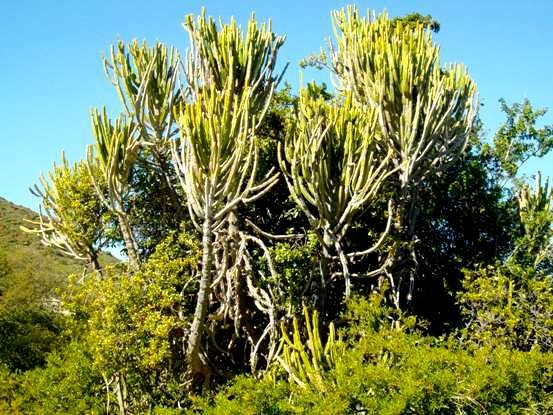Euphorbia tetragona

Euphorbia tetragona (SA Tree List No. 354) is a spiny succulent tree of the Eastern Cape and KwaZulu-Natal coastal region. It grows to 13 m on hillsides in dry thorn forest or scrub.
This many branched specimen grows in the Karoo Desert National Botanical Garden at Worcester in the Western Cape where it is doing very well. Sharing space with neighbouring plants that come very close is very much the norm for this tree in habitat. The trunk is cylindrical on large specimens, slightly angled on younger stems.
The dry stems of the honey euphorbia, the trees common name, are burnt by traditional farmers on their maize fields. This practice yields potassium that fertilises the crops.
A marked decline in the average tree size and sapling numbers in the Fish River valley has been reported in a four year study by Lent, et al, published in 2010. The cause is ascribed to herbivores consuming and damaging plants, particularly baboon and black rhinoceros.
The species is similar to E. excelsa which grows in Limpopo far to the north (www.onlinelibrary.wiley.com; Coates Palgrave, 2002).

